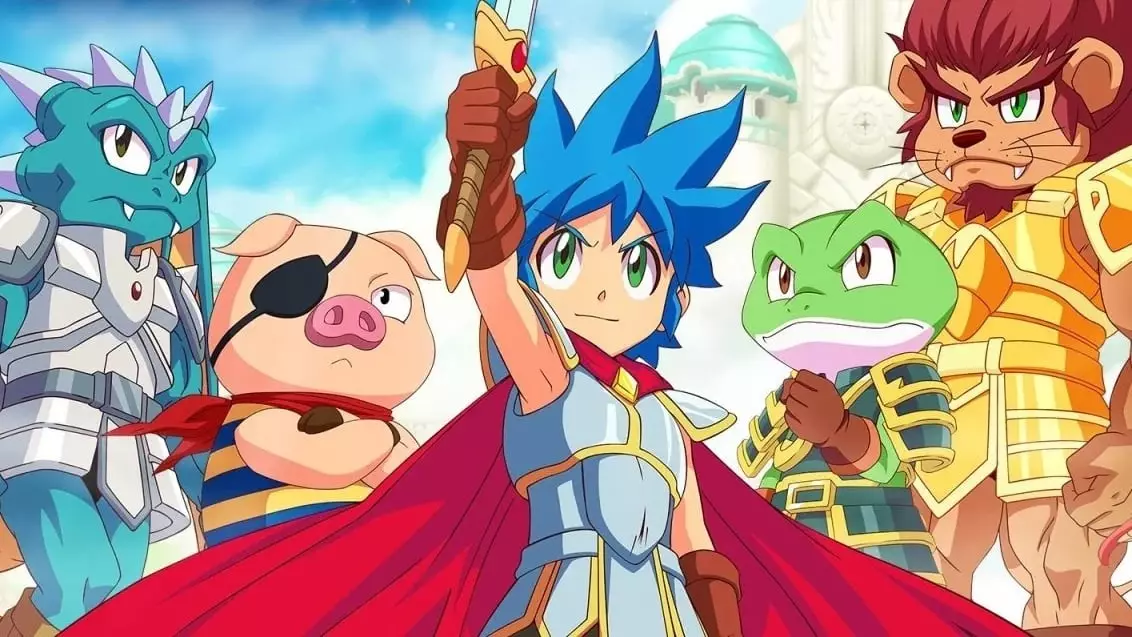As the gaming community prepares for the impending release of the Switch 2, developers are suddenly re-evaluating their existing offerings. The excitement radiating from FDG Entertainment’s inquiry on social media regarding a potential update to their celebrated title, *Monster Boy and the Cursed Kingdom*, exposes an intriguing intersection of nostalgia and innovation. The idea of elevating the already beloved platformer from 60 frames per second (fps) to an exhilarating 120 fps marks not just a technical enhancement, but also a symbolic nod to devoted fans who cherish their gaming experiences.
A Testing Ground for Innovation
The conversation initiated by FDG Entertainment puts a spotlight on the game’s underlying technical capabilities. While *Monster Boy* smoothly operates at 60 fps, a leap to 120 fps would undoubtedly enrich the overall experience, allowing for seamless gameplay that can approach the fluidity found in modern high-caliber titles. This proposed update not only demonstrates FDG’s commitment to evolving a classic but also illustrates a strategy prevalent in the gaming industry: harnessing nostalgia while simultaneously paving the way for future advancements.
With other consoles like the Xbox Series X and PS5 showcasing the benefits of playable updates, it is clear that gamers are now accustomed to expecting graphical enhancements post-launch. The inquiry posed by FDG is not only an invitation for feedback but also a clever marketing maneuver; it invites fans to participate actively in the game’s future, effectively creating a community-driven vision for improvement.
Navigating Nostalgia and Modern Gameplay Dynamics
When *Monster Boy and the Cursed Kingdom* first graced the Switch, it was hailed as a “tremendous accomplishment,” primarily due to its rich visuals and engaging soundtrack. However, beyond superficial accolades lies a more profound narrative; the game serves as a tribute to an era of gaming defined by its quirky platforming challenges. For the uninitiated, embracing the game, which thrives on its 8-bit roots, presents a unique contrast to the hyper-realism characteristic of contemporary games.
Understandably, the promise of 120 fps could bridge the gap between these two contrasting styles, allowing both new players and longtime fans to experience a reimagined sense of rhythm and awe. Regardless of the visuals, the essence of the game remains intact. By encouraging players to express their desires for updates, the developers signify that they are listening, a refreshing stance in a market often criticized for distancing itself from its base.
The Broader Implications of FPS Enhancements
The fascination surrounding fps enhancement extends beyond mere graphics; it taps into the core of player satisfaction. A smoother, faster frame rate can significantly affect gameplay, leading to more rewarding experiences. Other developers, such as Shin’en Multimedia with their title *Fast Fusion*, echo this sentiment, signifying a possible trend where studios prioritize enhancing their titles as hardware evolves.
This growing interest in performance upgrades adds a dynamic layer to the gaming landscape, urging developers to consider not only how to innovate but also how to address the wants of an engaged community. The call for feedback from players on updates reflects a trend toward a more collaborative development process, where consumer sentiment shapes game evolution.
In a world where the next generation of consoles raises the bar, FDG Entertainment’s explorations highlight the delicate balancing act between maintaining traditional game mechanics and leveraging new technologies to keep gameplay exhilarating. For fans of *Monster Boy*, the prospect of a 120 fps update embodies not just a feature but a reaffirmation that the gaming experience is always evolving, much like the worlds within the games themselves.


Leave a Reply